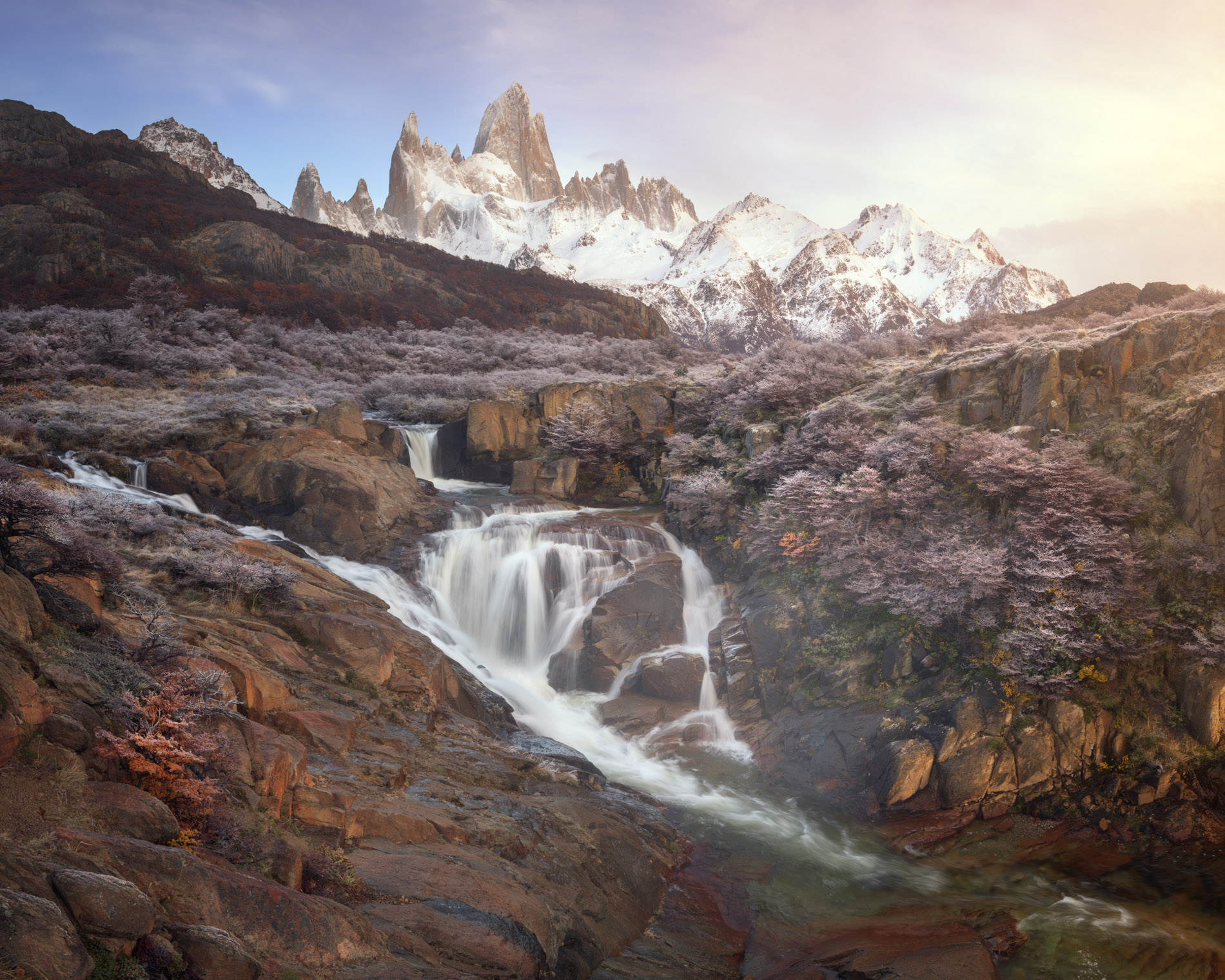Torres del Paine National Park, Chile
Photographing extraordinary views of Chilean Patagonia
04 Dec 2020 by Andrey Omelyanchuk
So remote is the region of Chilean Patagonia that it is difficult to identify exactly where it begins. It occupies roughly one-third of Chile’s territory, consuming much of the southernmost part of the country. It is a rugged and formidable landscape: at its most southern point, it lies just 900 miles from Antarctica. It calls to the curious and adventure-seeking, but it is not for the faint of heart.
Chilean Patagonia is a different experience than Argentina. While they are both ruggedly beautiful, in Chile, the Andes Mountains descend vertiginously into the sea, creating a dramatic and craggy coastline of fjords and archipelagos.
The highlight of this extraordinary landscape is the Torres del Paine National Park, which in 2013 was named the eighth wonder of the world. One of the most scenic trekking destinations in the world, Torres del Paine is home to vibrant blue lakes, thick forests, and an astonishing variety of wildlife. There is little wonder why it is considered by many to be South America’s finest national park.

Pehoe Lake and Cuernos Peaks in the Morning, Chile
As most visitors to the park do, I spent several days hiking the trails that run through the park. I could easily have spent weeks wandering among the wild beauty of the region, but my time was limited, and I wanted to focus my efforts on capturing the most striking locations within the park.
Like Argentinian Patagonia, Torres del Paine is dotted with glassy, mirror-like lakes reflecting the striking beauty of the surroundings. Lake Pehoe, in particular, is a stunner. Getting there requires some effort, but the reward for the extra work is one of the most breathtaking views on the planet. Considered one of the most beautiful lakes in the world, Pehoe is a brilliant turquoise blue lake located at the base of the Paine Massif. Fed by glacial waters, the lake’s colors can change throughout the day, depending on the amount of sunlight. In some light, it appears to be a deep amber, while at other times, it takes on purple hues. In any light, it is remarkable.

Panorama of Pehoe Lake, Torres del Paine National Park, Chile
On the W trekking circuit, one of the most spectacular sites is the Cuernos Peaks, which tower over Lake Pehoe. Shaped by glacial erosion millennia ago, the three peaks (or “horns”) are among the most impressive mountains in the world due to their striking, jagged silhouettes. They are also among the most easily recognizable of the world’s peaks due to their unique coloration: in what might at first appear to be a trick of the sunlight, the trio of peaks are bisected by a prominent white band, with darker rock below and above. The grayish-white band is granite, ancient and among the hardest of rocks. The black stone at both the base and top of the spires is sedimentary stratum, the thin veneer of rock that settles over the distant past.
The Cuernos Peaks are striking no matter the time of day, but as I often do, I rose before dawn to capture them bathed in a haze of early morning mist. For me, they possess an almost mystical beauty. Shrouded in mist and reflecting the craggy spires above, Lake Pehoe might be the province of some mythical deity, an uncanny lord who presides over Earth from one of its most striking peaks. In a place such as this, it’s easy for the mind to wander.

Pehoe Lake in Torres del Paine National Park, Chile
Getting to Lake Pehoe isn’t the easiest trip I’ve ever made. The terrain and environment, while not impossible, weren’t exactly easy. Even when the trekking is of moderate difficulty, the wind can be nearly overpowering. With winds blowing up from Antarctica and the Southern Patagonian Ice Field, the weather is unpredictable and frequently difficult; heavy cloud cover means that it’s possible to spend days in the park without ever seeing the peaks.

Pehoe Lake and Cuernos Peaks in the Evening, Chile
But I was lucky. The weather favored me, and I was able to capture both the lake and the peaks in all their ethereal beauty. I am not one of the intrepid climbers; like most people who come to Patagonia, I will only ever see the Cuernos Paine from far away. But I don’t have to reach the summit to appreciate the grandeur of the peaks. I was happy to have a few days in the shadows of the peaks and content to admire it with my feet firmly on the ground. It is enough for me simply to know that such majesty exists and to be able to capture a bit of it through my lens.
View Torres del Paine galleryCategory
Related Posts
Login Required: Please login or create an account to post comments.



